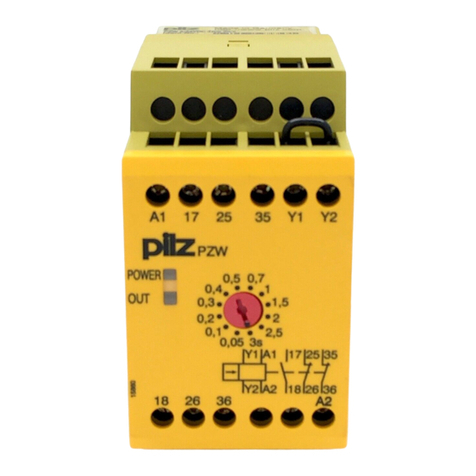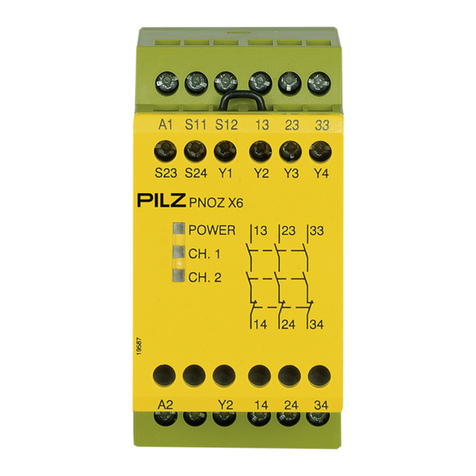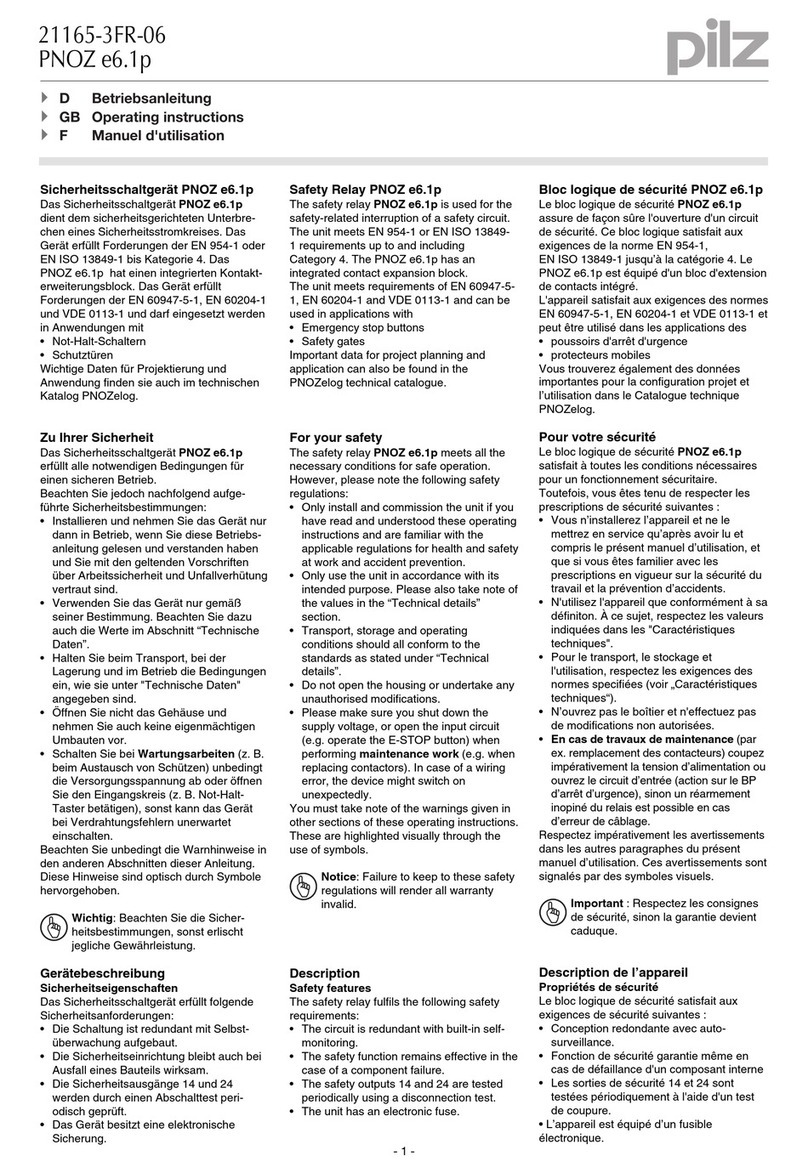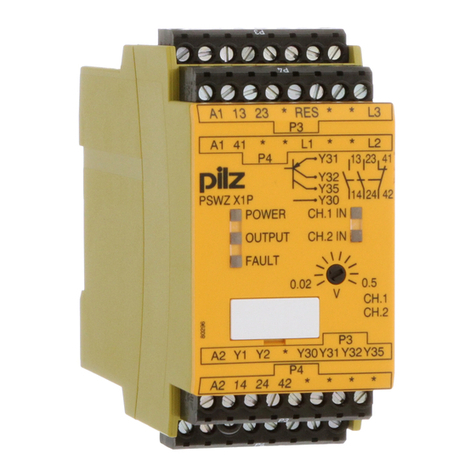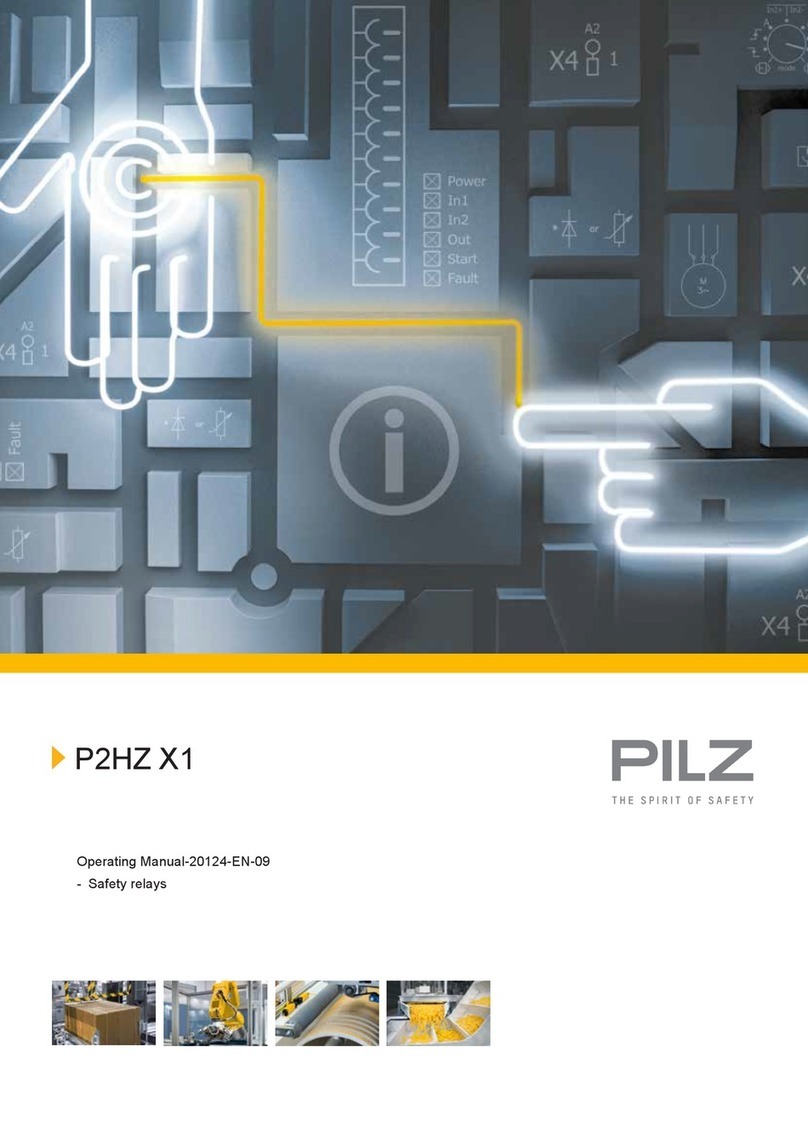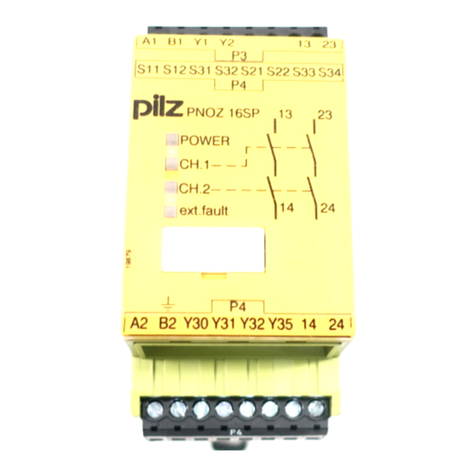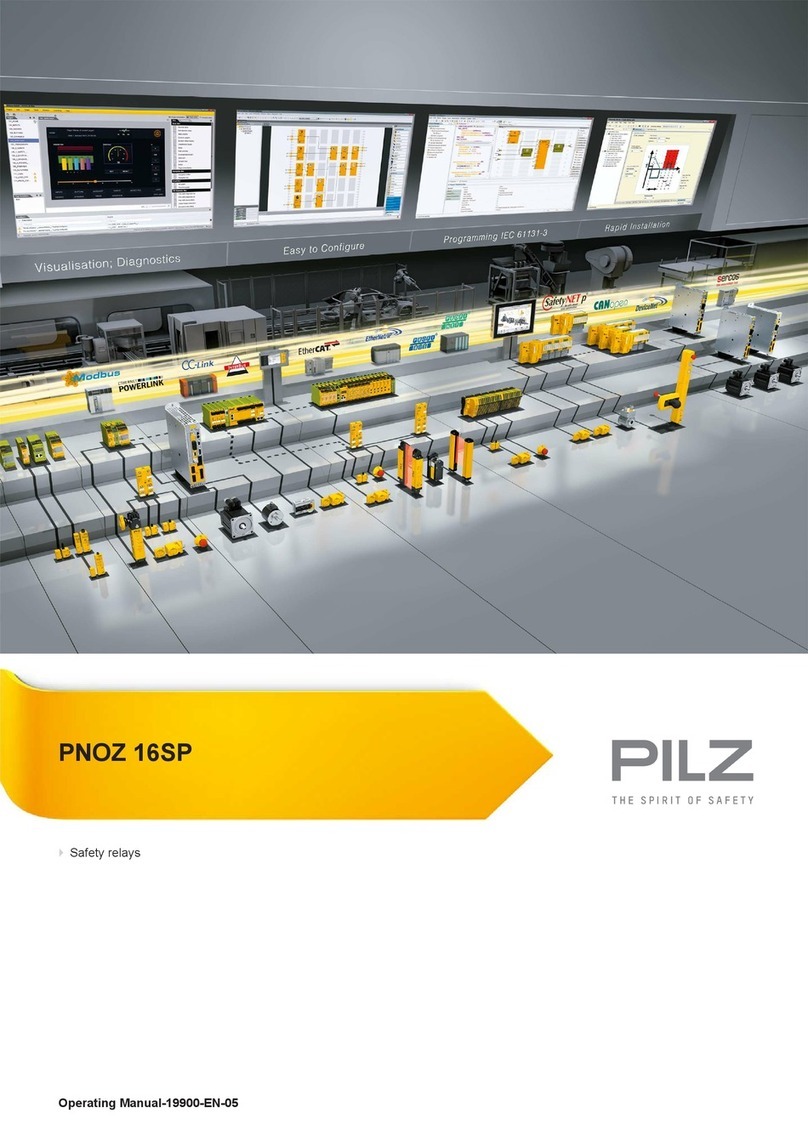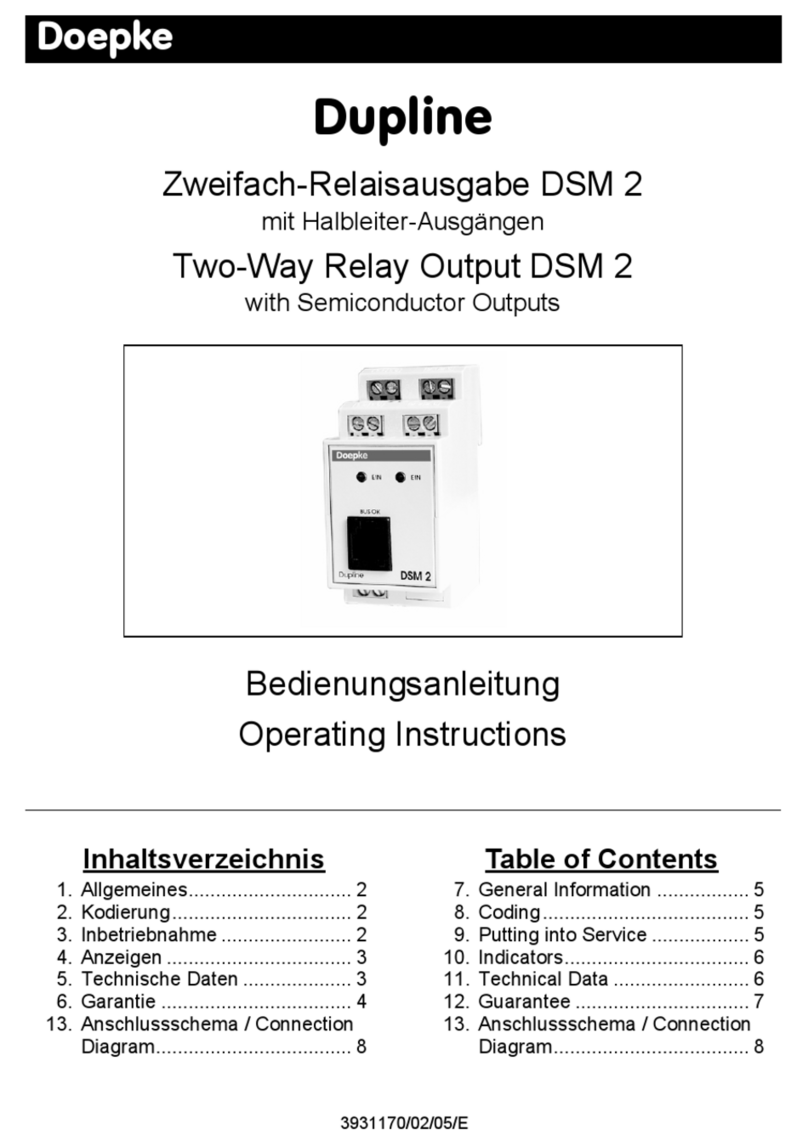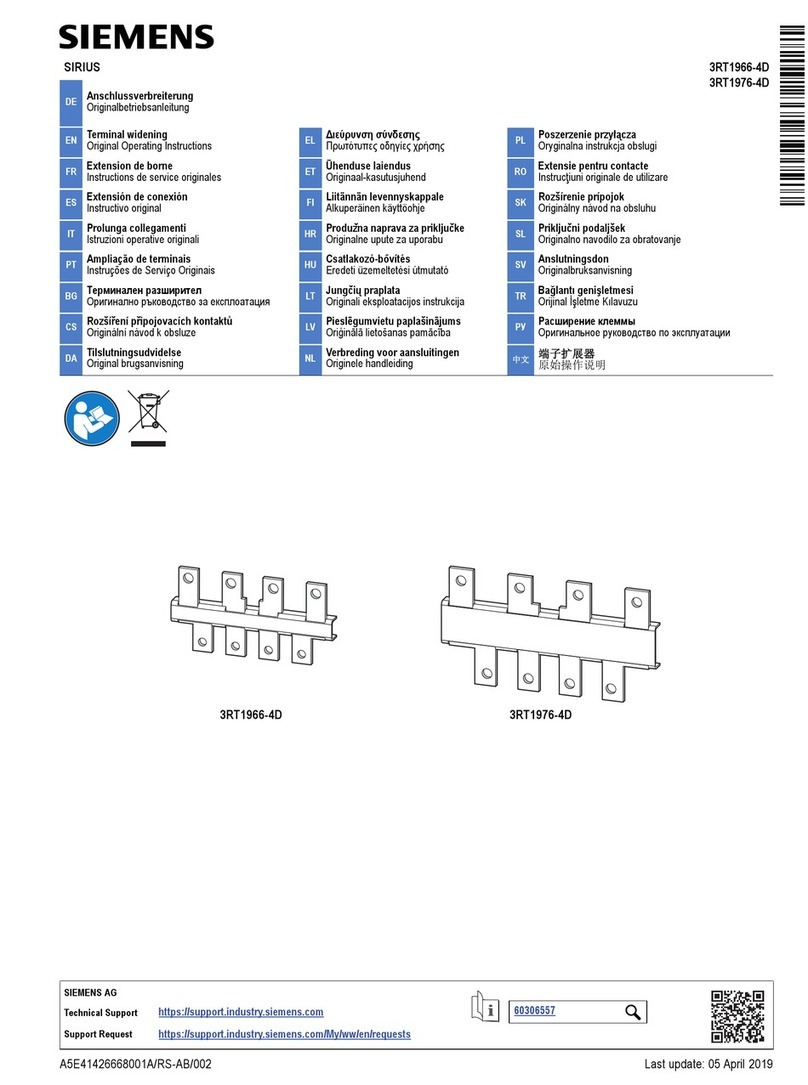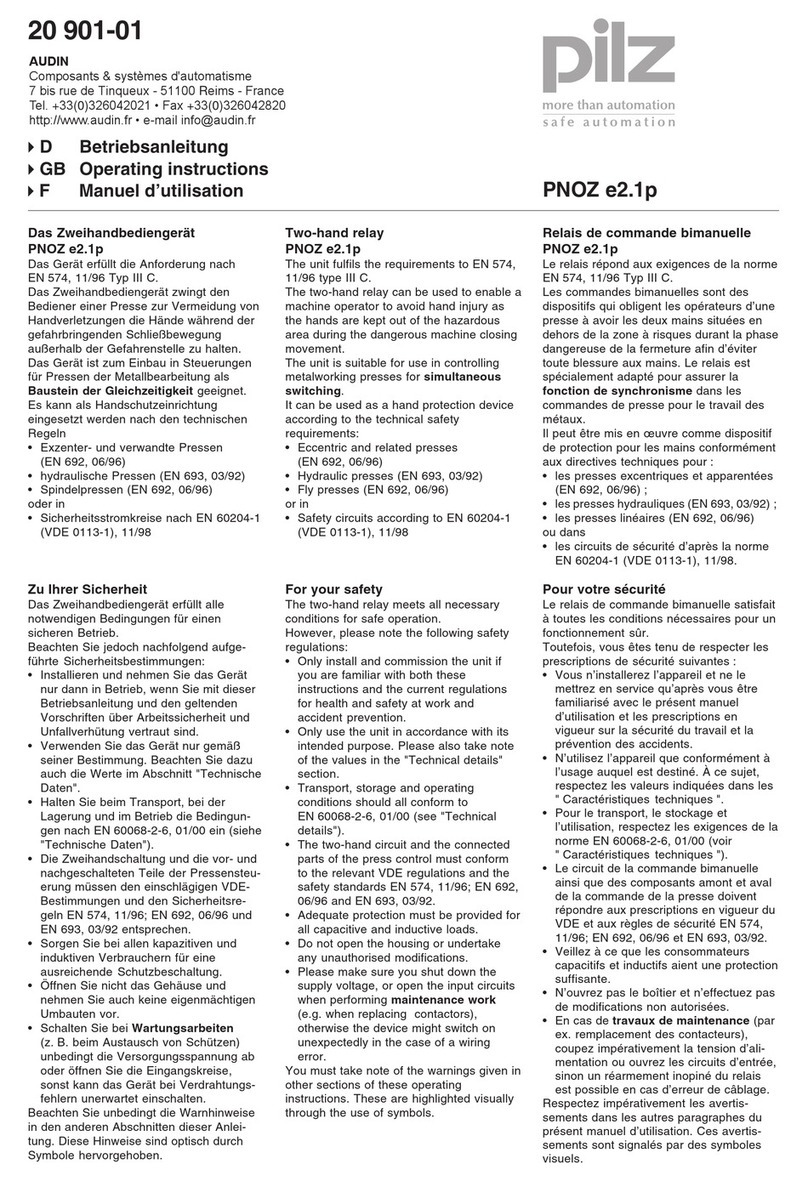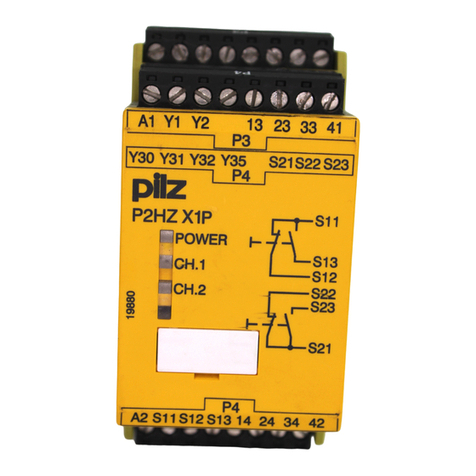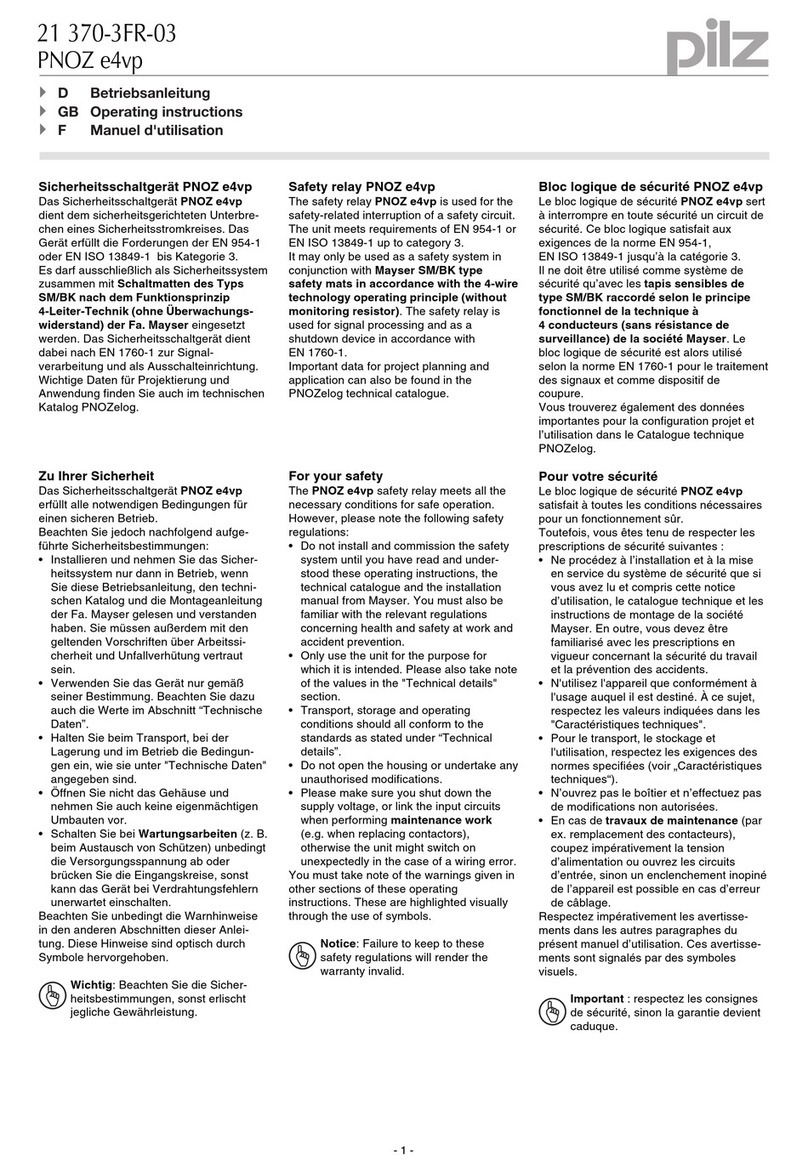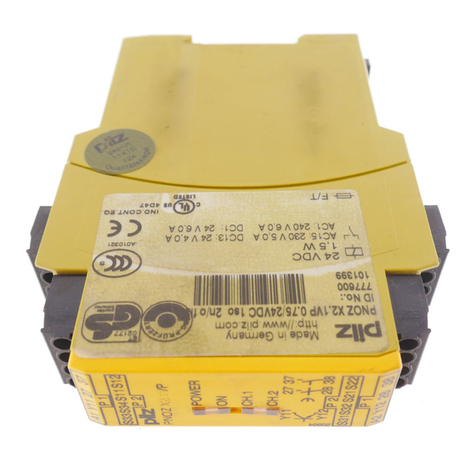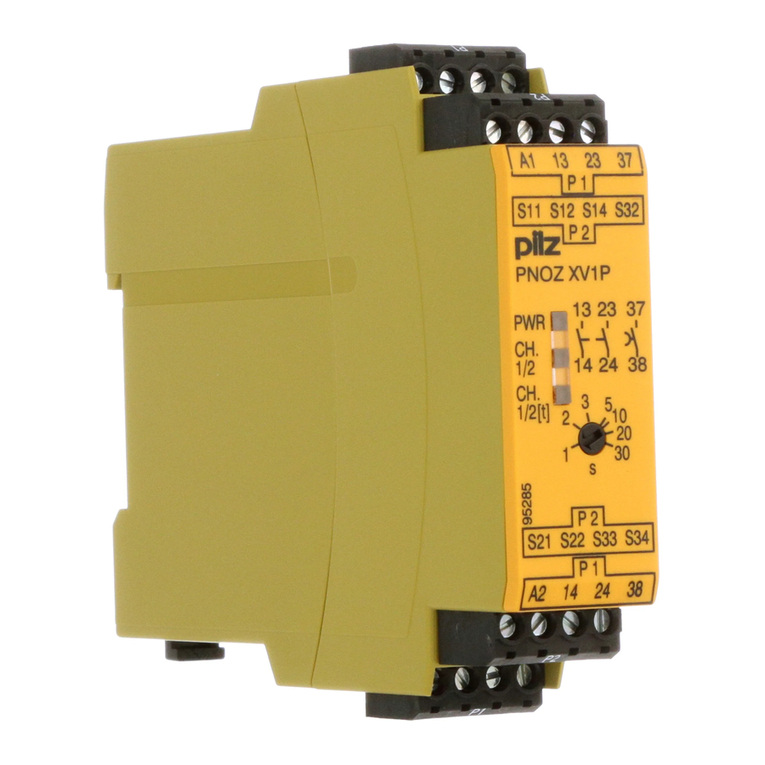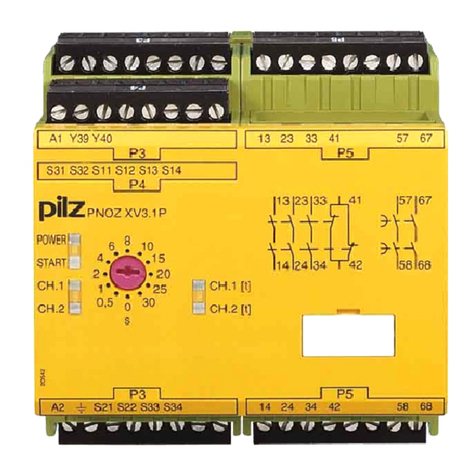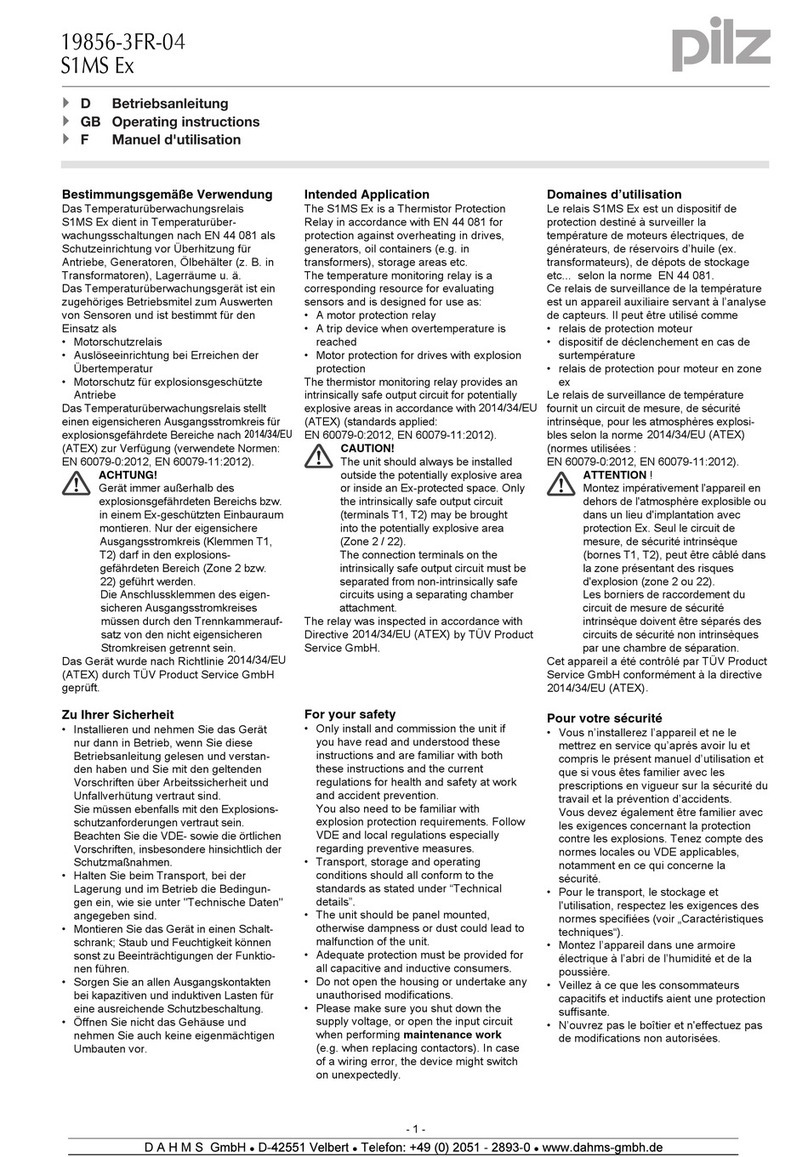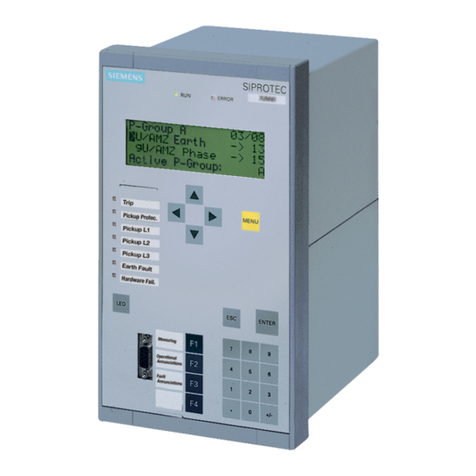- 2 -
Funktionsbeschreibung
Das Schaltgerät PNOZ X2.7P/PNOZ X2.8P
dient dem sicherheitsgerichteten Unterbre-
chen eines Sicherheitsstromkreises. Nach
Anlegen der Versorgungsspannung leuchtet
die LED "Power". Das Gerät ist betriebsbe-
reit, wenn der Startkreis S12-S34 geschlos-
sen wird (automatischer Start) oder
geschlossen und wieder geöffnet wird
(manueller Start).
• Eingangskreis geschlossen (z. B. NOT-
AUS-Taster nicht betätigt):
Relais K1 und K2 gehen in Wirkstellung
und halten sich selbst. Die Statusanzeige
"CH. 1" und "CH. 2" für Kanal 1 und 2
leuchtet. Die Sicherheitskontakte 13-14,
23-24, 33-34 sind geschlossen, der
Hilfskontakt 41-42 ist geöffnet.
• Eingangskreis wird geöffnet (z. B. NOT-
AUS-Taster betätigt):
Relais K1 und K2 fallen in die Ruhe-
stellung zurück. Die Statusanzeige "CH.
1" und "CH. 2" erlischt. Die Sicherheits-
kontakte 13-14, 23-24, 33-34 werden
redundant geöffnet, der Hilfskontakt 41-
42 geschlossen.
Fig. 1: Innenschaltbild/Internal Wiring Diagram/Schéma de principe
Function Description
The PNOZ X2.7P/PNOZ X2.8P relay
provides a safety-oriented interruption of a
safety circuit. When the operating voltage is
applied the LED "Power" is illuminated. The
unit is ready for operation, when the reset
circuit S12-S34 is closed (automatic reset)
or is closed and opened again (manual
reset).
• Input circuit closed (e.g. the emergency
stop button is not pressed):
Relays K1and K2 energise and retain
themselves. The status indicators "CH. 1"
and "CH. 2" for channels 1 and 2, resp.
illuminate. The safety contacts 13-14, 23-
24, 33-34 are closed, the auxiliary contact
41-42 is open.
• Input circuit is opened (e.g. emergency
stop is pressed)
Relays K1 and K2 de-energise. The
status indicators "CH.1" and "CH.2" go
out. The safety contacts 13-14, 23-24,
33-34 open (redundantly) and the
auxiliary contact 41-42 closes.
Description du fonctionnement
Le relais PNOZ X2.7P/PNOZ X2.8P assure
de façon sure, l’ouverture d’un circuit de
sécurité. A la mise sous tension du relais
(A1-A2), la LED "Power" s'allume. Le relais
est activé si le circuit de réarmement S12-
S34 est fermé (réarmement automatique)
ou fermé puis réouvert (réarmement
manuel).
• Circuits d'entrée fermés (poussoir AU non
actionné) :
Les relais K1 et K2 passent en position
travail et s'auto-maintiennent. Les LEDs
"CH.1" et "CH.2" (canal 1 et canal 2)
s'allument. Les contacts de sécurité (13-
14, 23-24, 33-34) sont fermés et le
contact d'info. (41-42) est ouvert.
• Circuits d'entrée ouverts (poussoir AU
actionné) :
Les relais K1 et K2 retombent. Les LEDs
"CH.1" et "CH.2" s'éteingnent. Les
contacts de sécurité (13-14, 23-24, 33-
34) s'ouvrent et le contact d'info. (41-42)
se ferme.
Operating Modes
• Single-channel operation: Input wiring
according to VDE 0113 and EN 60204
and no redundancy in the input circuit.
Earth faults are detected in the
emergency stop circuit (Connect S21 with
the ground earth).
• Two-channel operation: no short circuit
detection: Redundant input circuit. Earth
faults and short circuits in the emergency
stop circuit are detected (Connect S21
with the ground earth).
• Dual-channel operation, with short circuit
detection: Redundant input circuit. Earth
faults in the emergency stop circuit and
shorts across the Emergency Stop push
button are also detected (Connect S21
with the ground earth).
•Only PNOZ X2.8P: automatic reset: The
unit is active as soon as the input circuit is
closed.
• Manual reset: The unit is active when the
reset circuit S12-S34 is closed. Automatic
reset following a loss/return of supply
voltage is thereby prevented.
•Only PNOZ X2.7P: monitored manual
reset: The unit is only active when the
reset circuit S12-S34 is closed at least
300 ms after closing the emergency stop
circuit and then released. This prevents
automatic reset and the reset button
bridging.
Betriebsarten
• Einkanaliger Betrieb: Eingangsbeschal-
tung nach VDE 0113 und EN 60204,
keine Redundanz im Eingangskreis,
Erdschlüsse im Tasterkreis werden
erkannt (S21 mit Schutzleitersystem
verbinden).
• Zweikanaliger Betrieb ohne Querschluss-
erkennung: Redundanter Eingangskreis,
Kurzschlüsse und Erdschlüsse im
Tasterkreis werden erkannt (S21 mit
Schutzleitersystem verbinden).
• Zweikanaliger Betrieb mit Querschluss-
erkennung: Redundanter Eingangskreis,
Kurzschlüsse und Erdschlüsse im
Tasterkreis und Querschlüsse zwischen
den Tasterkontakten werden erkannt (S21
mit Schutzleitersystem verbinden).
•Nur PNOZ X2.8P: automatischer Start:
Gerät ist aktiv, sobald der Eingangskreis
geschlossen ist.
• Manueller Start: Gerät ist aktiv, wenn der
Startkreis S12-S34 geschlossen wird.
Dadurch ist ein automatischer Start des
Schaltgeräts nach Spannungsausfall und
-wiederkehr ausgeschlossen.
•Nur PNOZ X2.7P: manueller Start,
überwacht: Gerät ist nur aktiv, wenn der
Startkreis S12-S34 frühestens 300 ms
nach Schließen der NOT-AUS-Kontakte
geschlossen wird. Dadurch ist eine
Modes de fonctionnement
• Commande par 1 canal : conforme aux
prescriptions de la EN 60204, pas de
redondance dans le circuit d’entrée. La
mise à la terre du circuit d’entrée est
détectée (Relier la borne terre).
• Commande par 2 canaux sans détection
de court-circuit.: circuit d’entrée
redondant. La mise à la terre et les
défaillances des contacts sont détectées
(Relier la borne terre).
• Commande par 2 canaux avec détection
de court-circuit.: circuit d’entrée
redondant. La mise à la terre,les
défaillance des contacts ainsi que les
courts-cirucits entre les canaux sont
détectés. (Relier la borne terre).
•PNOP X2.8P uniquement :
réarmement automatique : le relais est
activé dès la fermeture des canaux
d’entrée.
• Réarmement manuel : l'appareil est activé
dès que le circuit S12-S34 est fermé. Un
réarmement automatique du relais après
une coupure d’alimentation est ainsi
impossible.
•PNOP X2.7P uniquement : Réarmement
manuel auto-contrôlé : le relais n'est
réarmé que si le circuit de réarmement
(S12-S34) est ouvert avant la fermeture
du circuit d'entrée, puis refermé au min.
A1 (L+) A2 (L-)
S22
S12
S21
S11 S34 13
14
K1
K2
23
24
S52 33
34
41
42
U
B
+
~
CH1
Start
Unit
CH2
